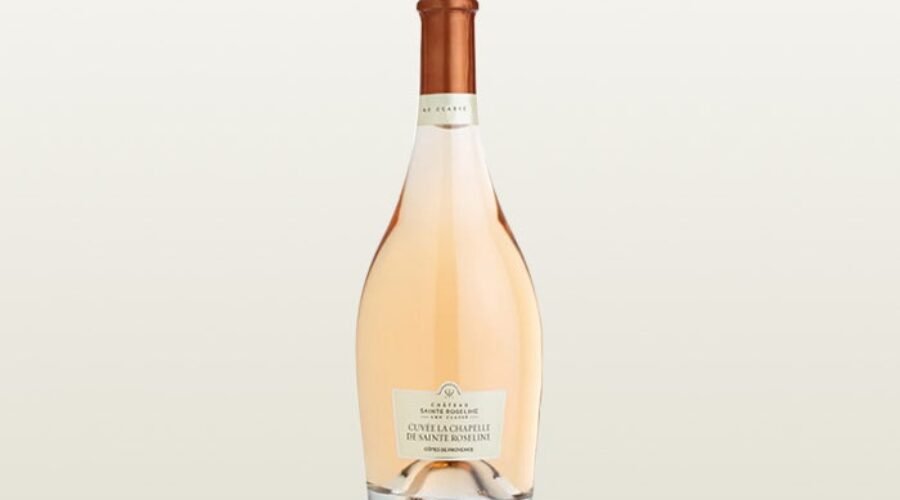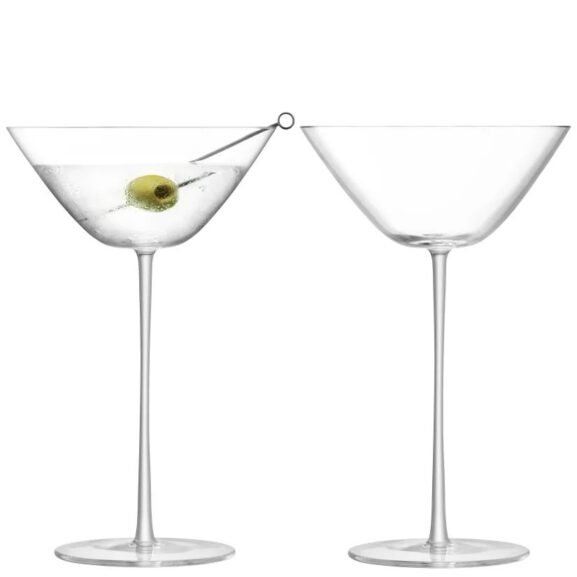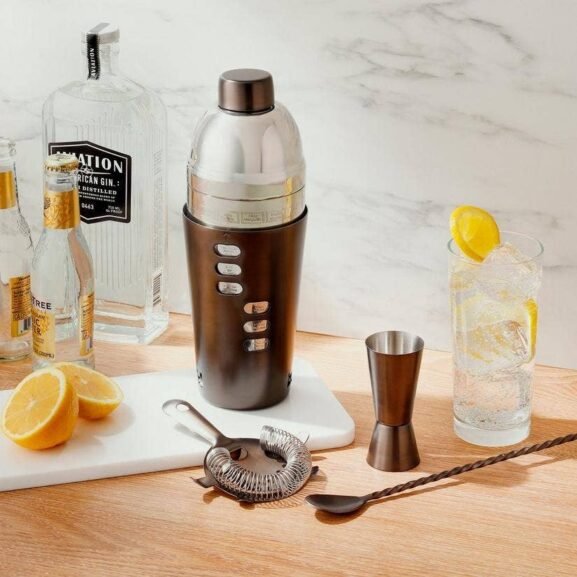The Ultimate Guide to French Rosé, Organized by Region
In the world of rosé, France continues to set the standard. Once thought of as little more than casual poolside sippers, French rosés have taken on the country’s diverse terroir and soil, showcasing increasing complexity and depth. Gone are the days of “rosé all day”—French winemakers aren’t messing around when it comes to pink wine.
Given that Provençal rosé dominates wine store shelves, you might assume that France’s pink wine production begins and ends with the South of France. However, there are six regions where mesmerizing, distinctive rosé is being produced: Provence, Bandol, the Rhône Valley, Languedoc, Bordeaux and the Loire Valley. Read on for a guide to France’s most prominent rosé styles and the regions that craft them.
Provence
Since the turn of the century, the region of Provence has become nearly synonymous with rosé wine. These wines can be composed of a blend of red grapes like Grenache, Cinsault, Syrah and Mourvèdre, while sometimes featuring white grapes like Vermentino, known locally as Rolle. With its signature pale-pink color, relatively low alcohol level and crisp flavor (not to mention its creative packaging), this style quickly became a favorite for sommeliers and casual drinkers alike.
As the popularity of rosé grew in the global market, so did the number of producers seeking to innovate and bolster the reputation of these wines, leading to standout bottlings across Provence and its sub-appellations.
“Coteaux d’Aix en Provence allows Cabernet Sauvignon to be added to the blend and is the most structured of Provence’s rosé appellations. It’s a good food wine,” says Wine Enthusiast Writer-at-Large Roger Voss, who reviews French wines. “Coteaux Varois en Provence, meanwhile, is rounded, balanced and often perfumed. It’s the best choice if you want an ageworthy rosé that will last well into the winter.” And if you’re searching for the crisp, quintessential Provençal rosé, look to Côtes de Provence—its wines are layered with bright fruit, zippy acidity and just a touch of white pepper.
In Provence, rosés are generally made intentionally through maceration or skin contact, meaning the grapes are grown explicitly for rosé, as opposed to the saignée method’s usage of leftover grapes from the production of other wine. To Cody Wexler, Wine Enthusiast’s Tasting Manager and reviewer of Provençal wines, this practice, combined with the sheer volume of the region’s production, speaks to the remarkable dedication of its winemakers.
“About 90% of Provence’s wine exports are rosés,” he says. “People often have misconceptions about rosé as being cheaply made or unserious, but I think this shows just how intentional Provence and its producers are about making it.”
Wine Enthusiast recommends:
Château Sainte Roseline 2024 La Chapelle de Sainte Roseline Cru Classé Rosé (Côtes de Provence)
Earthy and spicy, the nose of this Rosé immediately grabs your attention. The palate opens with flavors of dried apricot and pear then the vibrant acidity kicks in. The finish is all minerality and salinity in the best way. Editor’s Choice. 94 Points — Cody Wexler
$49
Onshore Cellars

Château Vignelaure 2024 Rosé Red (Coteaux d’Aix-en-Provence)
The nose of this wine smells like strawberries and cream with hints of peach and sea shells. The palate shows great balance between the strawberry vanilla flavor and the citrus pith bitterness, the soaring acidity also lifts up this refreshing rosé. 92 Points — C.W.
$22
Wine.com

Château Roubine 2024 Premium Rosé (Côtes de Provence)
Peach aromas jump into your nose with bubblegum and pear following closely behind. The palate has lots of fruit and coats your mouth completely before giving way to a refreshing mineral driven finish. 92 Points — C.W.
$30
kosherwine.com
Bandol
The rosés of Bandol, the small Provençal enclave just inland from the Mediterranean, contain multitudes. Known for its Mourvèdre-heavy blends, they “showcase an unmatched depth and complexity,” says Wexler. “Mourvèdre is a notoriously tricky grape to grow. I’ve heard legends that the vines need to be able to see the ocean to thrive, making Bandol the ideal spot because of its seaside nature.”
// Create the element
var script_686fda4f24d84 = document.createElement(“script”);
script_686fda4f24d84.innerHTML = `
window.googletag = window.googletag || {cmd: []};
googletag.cmd.push(function() {
var adType = “leaderboard”;
var mapping;
var lbmapping = googletag.sizeMapping()
.addSize([1024, 0], [[970, 250], [970, 90], [1, 1], [728, 90]])
.addSize([728, 0], [[728, 90], [1, 1]])
.addSize([320, 0], [[1, 1], [300, 50], [300, 100], [320, 50], [320, 100]])
.addSize([0, 0], [[1, 1], [320, 50]])
.build();; // Size mapping for leaderboard ads
var medrecmapping = googletag.sizeMapping()
.addSize([1024, 0], [[300, 600],[300, 250]])
.addSize([728, 0], [300, 250])
.addSize([320, 0], [[1, 1],[300, 250]])
.addSize([0, 0], [[1, 1], [300, 250]])
.build(); // Size mapping for med rectengle ads
if(‘/39808611/article_page/article_leaderboard_1’ == ‘/39808611/article_page/article_leaderboard_1’
|| ‘/39808611/article_page/article_leaderboard_1’ == ‘/39808611/article_page/article_leaderboard_2’
|| ‘/39808611/article_page/article_leaderboard_1’ == ‘/39808611/article_page/article_leaderboard_3’) {
mapping = googletag.sizeMapping()
.addSize([1920, 0], [[728, 90]]) // >= 1920px
.addSize([1440, 0], [[728, 90]]) // 1440px-1919px
.addSize([730, 0], [[300, 250]]) // 730px-1439px
.addSize([0, 0], [[320, 100], [320, 50], [300, 100], [300, 50], [300, 250]]) // Up to 729px
.build();
} else {
mapping = adType == ‘leaderboard’ ? lbmapping : medrecmapping;
}
googletag.defineSlot(‘/39808611/article_page/article_leaderboard_1’, [],
‘div-gpt-ad-686fda4f24d84’).addService(googletag.pubads()).defineSizeMapping(mapping);
googletag.pubads().enableSingleRequest();
googletag.pubads().collapseEmptyDivs();
googletag.display(‘div-gpt-ad-686fda4f24d84’);
});
`;
// Append the script to the body
document.body.appendChild(script_686fda4f24d84);
Mourvèdre’s weight, structure and poise gives these rosés remarkable aging potential. Some even see time in oak, adding even more years to their already impressive shelf life.
Wine Enthusiast recommends:

Domaine la Suffrène 2022 Rosé (Bandol)
The Mourvèdre of Bandol gives its weight and richness to this organic wine. Its smooth texture brings out red fruits contrasting with the acidity. Drink now. 92 Points — Roger Voss
$26
Wines to Go

Domaines Ott 2022 Château Romassan Rosé (Bandol)
This is a rich wine, its Mourvèdre giving concentration and a fine structure. From one of the Ott domaines, it has spice as well as layers of red fruits. Drink from later this year. Organic. 92 Points — R.V.
$70
Buywinesonline.com

Château Vannières 2022 Rosé (Bandol)
Low yields and some old vines are behind the weight and concentration of this ripe wine. It has plenty of rich fruits, including red berries shot with citrus and kiwi. Weight comes from the Mourvèdre in the blend. Drink this fine wine from later in 2023. 92 Points — R.V.
$28
Plume Ridge Bottle Shop
Rhône Valley
Rosé from the Rhône Valley, like its red and white siblings, comes in a broad range of styles. Generally, though, you can expect to find luscious cherry and strawberry flavors of Grenache. Blends with Syrah, Mourvèdre or Cinsault are also common, and many Rhône include small proportions of white grapes.
In 1936, Tavel became the region’s first and, to date, only Appellation d’Origine Contrôlée (AOC) dedicated to the production of rosé and rosé alone. Intensely pink and concentrated in flavor, Tavel teeters closer to a delicate red wine than a standard rosé. Longer maceration on grape skins, typically 12 to 24 hours, produces hues that range from a fiery sunset to fuschia and even ruby.
In Wine Enthusiast Tasting Director and Rhône Valley wine reviewer Anna-Christina Cabrales’ eyes, “Tavel isn’t your average rosé. It’s got backbone, nuance and the kind of structure that begs for a little patience.”
The wine’s tannins and structure also make it a standout rosé for aging. “Give it a few years in bottle, and it evolves from charming to profound, like a summer memory ripening into poetry,” she says.
Elsewhere in the Valley, look to the maritime appellation of Costières de Nîmes “for juicy rosés bursting with watermelon flavors, complete with a hint of sea spray,” says wine reviewer Anna Lee C. Iijima. “By contrast, those from high-altitude vines in Ventoux or Luberon often have zestier sour cherry and raspberry flavors, edged by a cooling mineral crush. Widely available rosé labeled Côtes du Rhône can be sourced from anywhere in the greater Rhône Valley region.”
Wine Enthusiast recommends:

Brotte 2023 Les Églantiers Rosé (Tavel)
This wine presents a rose bouquet gently framed by Bing cherry, orange zest, white peach and beech mushrooms. The palate offers good depth of flavor, with bright acidity accentuating soft red fruits and a savory midpalate. Enjoy now. Best Buy. 93 Points — Anna-Christina Cabrales
$21
Esquin

Domaine Maby 2023 La Forcadière Rosé (Tavel)
Light ruby in hue, this wine reveals a powerful and complex nose, melding cherry skin, honeycrisp apple, white strawberry and baked rhubarb accented by delicate violet potpourri and sweet spices. Refreshing acidity and persistent minerality lead to a long, light-fruited finish, where soft red fruits and brisk acidity give length to a black tea finish Great now, yet will surely please with additional time in bottle. 93 Points — A.C.C.
$17
La Route des Vins

Château La Nerthe 2023 Les Cassagnes Rosé (Côtes du Rhône)
This delightful wine charms with confectionary aromas of white strawberry, raspberry, plum and candied ginger. Light on the palate, it promises to be a summer crowd-pleaser, echoing its inviting nose with every sip. 92 Points — A.C.C.
$18
Wine Transit
Languedoc
Languedoc, the world’s largest wine-growing region, is full of hidden gem rosés that often cost less than its French compatriots. The region’s many subsites and appellations vary in terms of soil composition, varietal preference and ocean proximity, though a few overarching conditions allow for ideal rosé production: A generally dry and warm Mediterranean climate, abundant sunshine and strong, moderating winds from maritime or mountain influence.
The region’s rosés can be produced using maceration or the saignée method, and typically exhibit flavors of bright, ripe red fruit, balanced by vivid acidity and a crisp, refreshing finish. Single-variety bottlings exist, but blends of the region’s primary red grapes, like Syrah, Grenache, Mourvèdre, Cinsault and Carignan, are more common.
Matt Kettman, Wine Enthusiast writer at large who reviews wines from California and Languedoc, says that the rosés he’s tasted from the region “have all been joyous in style, offering juicy, even bold fruit flavors alongside the crisp acidity and texture that comes from growing grapes so close to the Mediterranean Sea.”
He adds, “That the prices are so affordable makes it easy to argue that your rosé dollars are most wisely spent on Languedoc pinks. And for those seeking more serious expressions, the region’s Clos du Temple is producing perhaps the most detail-oriented rose on the planet, with a high price to match.”
Wine Enthusiast recommends:

Domaine Montrose 2024 Prestige Rosé of Grenache Noir (Côtes de Thongue)
This is dynamic rosé from a domaine that was founded in 1701 hits a lot of high points. Aromas of wet stone, tangerine peel and nectarine show on the nose. The palate is firm in texture and sizzling with acidity, framing the warmer peach, strawberry and watermelon fruit flavors. Best Buy. 93 Points — Matt Kettman
$18
Justerini & Brooks

Fleurs de Prairie 2024 Rosé (Languedoc)
A pale pink in the glass, this bottling is clean, precise and yet fairly exuberant on the nose, offering bubblegum, peach and ripe melon aromas. There’s more of a mineral kick to the stony palate, where generous watermelon and strawberry flavors align. Best Buy. 91 Points — M.K.
$22
Saratoga Wine

Gérard Bertrand 2023 Clos du Temple Rosé Red (Languedoc-Cabrières)
This wine gives you the best of two worlds. Pleasing herbal aromas kick off the nose including field grass, dried red cherry and red raspberry. Steely in texture, the palate brings along reserved red fruit that is supported by a lifting, snappy layer of acidity. 94 Points — M.K.
Inquire with the Winery
Bordeaux
Bordeaux rosés have come a long way, and fast. While the wines were once dull and tasted more of caramel than fruit, the landscape has shifted.
Previously, Bordeaux rosés were an afterthought to red winemaking and were generally produced via saignée, usually with leftover Merlot grapes. Now, many vineyards are operating with intentionality, growing and harvesting grapes that are specifically designated to become rosé.
// Create the element
var script_686fda4f26d5e = document.createElement(“script”);
script_686fda4f26d5e.innerHTML = `
window.googletag = window.googletag || {cmd: []};
googletag.cmd.push(function() {
var adType = “leaderboard”;
var mapping;
var lbmapping = googletag.sizeMapping()
.addSize([1024, 0], [[970, 250], [970, 90], [1, 1], [728, 90]])
.addSize([728, 0], [[728, 90], [1, 1]])
.addSize([320, 0], [[1, 1], [300, 50], [300, 100], [320, 50], [320, 100]])
.addSize([0, 0], [[1, 1], [320, 50]])
.build();; // Size mapping for leaderboard ads
var medrecmapping = googletag.sizeMapping()
.addSize([1024, 0], [[300, 600],[300, 250]])
.addSize([728, 0], [300, 250])
.addSize([320, 0], [[1, 1],[300, 250]])
.addSize([0, 0], [[1, 1], [300, 250]])
.build(); // Size mapping for med rectengle ads
if(‘/39808611/article_page/article_leaderboard_2’ == ‘/39808611/article_page/article_leaderboard_1’
|| ‘/39808611/article_page/article_leaderboard_2’ == ‘/39808611/article_page/article_leaderboard_2’
|| ‘/39808611/article_page/article_leaderboard_2’ == ‘/39808611/article_page/article_leaderboard_3’) {
mapping = googletag.sizeMapping()
.addSize([1920, 0], [[728, 90]]) // >= 1920px
.addSize([1440, 0], [[728, 90]]) // 1440px-1919px
.addSize([730, 0], [[300, 250]]) // 730px-1439px
.addSize([0, 0], [[320, 100], [320, 50], [300, 100], [300, 50], [300, 250]]) // Up to 729px
.build();
} else {
mapping = adType == ‘leaderboard’ ? lbmapping : medrecmapping;
}
googletag.defineSlot(‘/39808611/article_page/article_leaderboard_2’, [],
‘div-gpt-ad-686fda4f26d5e’).addService(googletag.pubads()).defineSizeMapping(mapping);
googletag.pubads().enableSingleRequest();
googletag.pubads().collapseEmptyDivs();
googletag.display(‘div-gpt-ad-686fda4f26d5e’);
});
`;
// Append the script to the body
document.body.appendChild(script_686fda4f26d5e);
These wines, like the region’s reds, are made from classic Bordeaux-style blends, with some exceptional bottles being made up entirely of Cabernet Sauvignon and Cabernet Franc. Although not as popular as those from Provence or Bandol, Bordeaux rosés satisfy a slice of the world’s demand for pale-colored, fresh and crisp wine, offering fruit with just a bare amount of structure. Bottlings often have a slight blue tinge, a result of the region’s oceanic climate and soil.
Some top estates, like Château Léoville-Barton, Château Brown and Domaine de Chevalier, make rosés that are more serious and sometimes wood-aged. However, those listed below fall under the Bordeaux Rosé appellation and are generally less expensive.
Wine Enthusiast recommends:

Château Mercier 2023 Rosé (Bordeaux Rosé)
The Chéty family has been producing wine since 1698. The latest rosé iteration has an interesting addition of 25% Malbec in the blend. That gives red berry aromas and bright, lightly textured wine. It is ripe, balanced and ready to drink. Best Buy. 90 Points — R.V.
$15
Flights & Bites

Château de la Dauphine 2023 Rosé (Bordeaux Rosé)
A creamy rosé from this Fronsac estate is full of orange-peel aromas and spicy acidity. A blend of Merlot and Cabernet Franc, it is a refreshing wine, crisp, while also open and tangy. It is ready to drink. Best Buy. 90 Points — R.V.
Inquire with the Winery

Château de Chambrun 2023 Rosé de Chambrun Rosé (Bordeaux Rosé)
A 100%-Cabernet Franc rosé, this has aromas of pink flowers and bright, perfumed red-fruit flavors. The wine is fresh, full of crisp acidity. Drink now. 89 Points — R.V.
$18
Domaines des Moncets
Loire Valley
As always, the Loire Valley is all about diversity. From high-acid, aromatic Chenin and Sauvignon Blanc to fruit-forward and earthy Pinot Noir, the region is a treasure trove of versatility, and this doesn’t just go for whites and reds.
The central Loire, close to the city of Orléans, is a land of chalk, rolling hills, narrow river valleys and elegant rosé. Here, in appellations like Sancerre, Menetou-Salon and Coteaux Giennois, high-quality bottlings abound. While famous for its Sauvignon Blanc, Sancerre rosé brings rich cherry-flavored Pinot Noir fruitiness, crisp minerality and rich texture, resulting in an aging potential of two or three years. Sancerre rosé has gained ground in global wine lists over recent years, and that rise in popularity isn’t random—it’s a reflection of the Loire’s successful efforts to produce higher quality Pinot Noir.
Looking west, Cabernet Franc dominates rosés from Chinon and Bourgueil. These wines, characterized by red currants and spice, reject the idea of rosé as purely a summer beverage.
Zooming out, the appellations of Rosé de Loire and Val de Loire cover both Anjou and Touraine. Anjou rosés, produced near the Atlantic, are made from a bewildering variety of grapes: Grolleau, Gamay, Cabernet Sauvignon, Cabernet Franc, Malbec and Pineau d’Aunis. Their style is at the whim of the producer. Though Touraine rosés can feature some of these grapes, they take Beaujolais’ cue and concentrate on Gamay.
Taking advantage of the Loire’s cool climate, both Rosé de Loire and Val de Loire have stepped up the quality of their rosés in recent years. The result is lightly textured, immediately drinkable, crisp and fruity wines with raspberry and red-fruit flavors.
Wine Enthusiast recommends:

Comte de la Chevalière NV Rosé (Sancerre)
This wine wants to show you what a serious, mature rosé can be. The orange-hued wine opens with a complex nose of nectarine, stewed apples, orange marmalade, honeysuckle and dried apricot. Rich and creamy in texture, the wine boasts well-integrated fruit kissed by golden-apple and strawberry puree. Serve with a cheese plate or enjoy by itself. Editor’s Choice. 93 Points — Reggie Solomon
$22
Nicholas Wines

Le Roi des Pierres 2023 Pinot Noir (Sancerre)
This Sancerre rosé has bright aromas of fresh strawberry, red currant and dried cherry sprinkled with white blossom. The wine is steely in texture with a well-integrated core of red-fruit that persists. Pair with quiche, scallops and crudité. 91 Points — R.S.
$26
Finding.Wine

Mary Taylor 2023 Luc Poullain Rosé (Touraine)
Fresh and vibrant, this is a solid rosé. White strawberry blossom and red cherry hug on the nose and picnic on a blanket of red raspberry. Tangerine citrus and white peach infuse the palate supported by tangy acidity. Best Buy. 90 Points — R.S.
$22
Preservation Wines
More Rosé Coverage
- Around the world, rosé is leveling up. These top bottles prove that “rosé all day” belongs in the past.
- Sommeliers gave us their tips for pairing steak with rosé—an underappreciated duo.
- Some winemakers are betting big on high-end rosé. Is it actually worth the money?
- Planning a trip to Southern France? Here are 10 must-visit Provençal wineries.

In the shop
Wine Enthusiast Brilliance! Shatterproof Tritan Universal Outdoor Wine Glasses (Set of 6)
In Stock | $59
The post The Ultimate Guide to French Rosé, Organized by Region appeared first on Wine Enthusiast.


